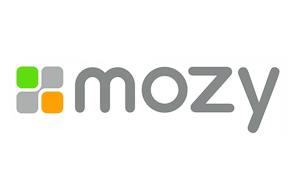 Andrew Kensler took the $10,000 grand prize in Mozy.com's Coding Deathmatch. The contest consisted of three timed rounds of competition, two preliminary rounds were held online and the final round at Mozy.com's American Fork (Utah) headquarters. Only the top eight contestants were allowed to proceed to the final round. Contestants were asked to write programs in any of nine possible languages to to solve a series of problems. The winning code was graded on it's ability to solve the problem in the least amount of execution time. The problem for the final round was to write a program that would read through a 2GB file of 20 million records of 100 bytes each. The first 8 bytes represented the key for that record and the remainder was a payload. The program had to write out a file containing just the records that would be in the 0, 1M, 2M, 3M... positions as sorted by the key values. Ties between keys were to be broken by original order in the file. Wall-clock execution time of the correct programs was used to decide the final ranking for the contest. Timings were done on a virtual machine with 1GB of RAM and 4GB of scratch disk space available.
Andrew Kensler took the $10,000 grand prize in Mozy.com's Coding Deathmatch. The contest consisted of three timed rounds of competition, two preliminary rounds were held online and the final round at Mozy.com's American Fork (Utah) headquarters. Only the top eight contestants were allowed to proceed to the final round. Contestants were asked to write programs in any of nine possible languages to to solve a series of problems. The winning code was graded on it's ability to solve the problem in the least amount of execution time. The problem for the final round was to write a program that would read through a 2GB file of 20 million records of 100 bytes each. The first 8 bytes represented the key for that record and the remainder was a payload. The program had to write out a file containing just the records that would be in the 0, 1M, 2M, 3M... positions as sorted by the key values. Ties between keys were to be broken by original order in the file. Wall-clock execution time of the correct programs was used to decide the final ranking for the contest. Timings were done on a virtual machine with 1GB of RAM and 4GB of scratch disk space available. The final round was composed of two stages. Contestants were given 45 minutes to write the program and submit the initial version. After that, the contestants were sent to a break room and called out individually to try their programs on a test machine. They were each informed of their comparative times and given 30 more minutes in the second stage to optimize or correct their programs. Timings after the second stage determined the winners.
"My program (written in C++) was the first to be tried and finished in 42.6s. The second place person's program finished in about 3 and a half minutes. No one else had a working program for the first stage. I chose to pass on the second optimization stage and let my program stand as it was. When they evaluated the programs after this second stage, they also tried the programs on a 1/10th size data set to determine the runners up for those who couldn't get their programs to handle the full size data set. In the end, everything remained as it had after the first stage except that one person had managed to get their program working on the smaller 1/10th scale data set for a time of ~36s. This won them third place."SCI Chief Software Engineer J. Davison de St. Germain was also among the finalists to compete in the final round. You may recall that last year's competition was declared a tie between the eight finalists. SCI software developers McKay Davis, Michael Callahan and Bryan Worthen, competing separately, were among the eight finalist to split the grand prize. They were not allowed to compete in this year's contest.
"I had a lot of fun with it and the folks from Berkely Data Systems were a nice a bunch. I went into the contest thinking that at worst, I'd wash out in the first round and then have the rest of my Saturday afternoon for other things. At best, I'd end up spending almost all of Saturday and perhaps win some cash. Either way, I had little to lose by trying and potentially a lot to gain. I'd definitely recommend that everyone try it next year."
"My wife and I have some ideas on how we'll spend the money. We plan to each splurge a little bit, donate some, and then bank the majority."




